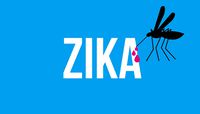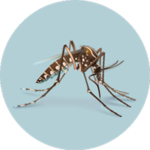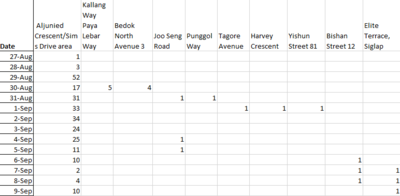ISSS608 2016 17T1 Group8 Report
|
|
|
|
|
Motivation
Zika virus was first discovered in 1947 and is named after the Zika Forest in Uganda. In 1952, the first human cases of Zika were detected and since then, outbreaks of Zika have been reported in tropical Africa, Southeast Asia, and the Pacific Islands. Zika outbreaks have probably occurred in many locations. Before 2007, at least 14 cases of Zika had been documented, although other cases were likely to have occurred and were not reported. Because the symptoms of Zika are similar to those of many other diseases, many cases may not have been recognized.
In Singapore, the first case was found in August 2016. Within 2 months, there are more than 400 cases identified locally. In this project, we will exam the spread pattern of the Zika virus, all over the world, to check out whether there is any correlation between the weather or geolocation and the spread of this virus leveraging data visualization. After that, we would also dig deeper in terms of the local cases in Singapore to figure out how can we take some appropriate action to prevent the spread of Zika in Singapore.
Dataset
- Global Zika Cases Dataset
- https://www.kaggle.com/cdc/zika-virus-epidemic
- This dataset shares publicly available data related to the ongoing Zika epidemic. It is being provided as a resource to the scientific community engaged in the public health response
- The dataset includes the following fields:
- report_date - The report date is the date that the report was published. The date should be specified in standard ISO format (YYYY-MM-DD).
- location - A location is specified for each observation following the specific names specified in the country place name database. This may be any place with a 'location_type' as listed below, e.g. city, state, country, etc. It should be specified at up to three hierarchical levels in the following format: [country]-[state/province]-[county/municipality/city], always beginning with the country name. If the data is for a particular city, e.g. Salvador, it should be specified: Brazil-Bahia-Salvador.
- location_type - A location code is included indicating: city, district, municipality, county, state, province, or country. If there is need for an additional 'location_type', open an Issue to create a new 'location_type'.
- data_field - The data field is a short description of what data is represented in the row and is related to a specific definition defined by the report from which it comes.
- data_field_code - This code is defined in the country data guide. It includes a two letter country code (ISO-3166 alpha-2, list), followed by a 4-digit number corresponding to a specific report type and data type.
- time_period - Optional. If the data pertains to a specific period of time, for example an epidemiological week, that number should be indicated here and the type of time period in the 'time_period_type', otherwise it should be NA.
- time_period_type - Required only if 'time_period' is specified. Types will also be specified in the country data guide. Otherwise should be NA.
- value - The observation indicated for the specific 'report_date', 'location', 'data_field' and when appropriate, 'time_period'.
- unit - The unit of measurement for the 'data_field'. This should conform to the 'data_field' unit options as described in the country-specific data guide.
- https://www.cdc.gov/zika/geo/index.html
- Singapore Zika Cases Dataset
- There are limited information on Singapore Zika cases. National Environment Agency (NEA) has published Media Releases and Updates regarding the local cases from Aug when the first case was annoucned. But there is no update on the exact location of the new cases found after Sep. In order to better visualize the spreading of the virus geographically, we only extract the data with location information from Aug to Sep which consists of about total 400 Zika cases. This dataset includes following attributes:
- date - the date when the Zika case was reported
- location - where the Zika case was found
- Besides the data we found in NEA, the report filed in The Straits Times also provide us some details of these cases.
- There are limited information on Singapore Zika cases. National Environment Agency (NEA) has published Media Releases and Updates regarding the local cases from Aug when the first case was annoucned. But there is no update on the exact location of the new cases found after Sep. In order to better visualize the spreading of the virus geographically, we only extract the data with location information from Aug to Sep which consists of about total 400 Zika cases. This dataset includes following attributes:
Design Framework
A detail description of the design principles used and data visualisation elements built
Future Work
Reference
https://www.cdc.gov/zika/geo/active-countries.html
The link above is a map includes countries and territories where mosquito-borne transmission of Zika virus has been reported, including countries with current travel notices issued for Zika.
https://www.gov.sg/microsites/zika?utm_source=SEM&utm_medium=News&utm_content=News+Keywords&utm_campaign=Zika
The link above is about the local zika cases and information released by SG gov.
https://d3js.org/
The official website of D3.


